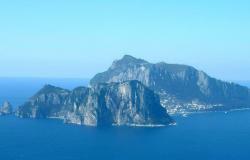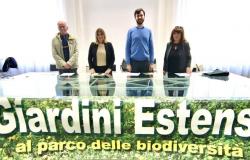
BELLUNO. “For the three Ladin communities present in the territory of the province of Belluno, defined as Ladins of Souramont. What we ask is respect and recognition of our identity which over the centuries has distinguished itself, compared to the other mountain communities of Belluno, for the conservation, protection, the development of Ladin-Ampezzo awareness and cultural heritage such as language, history, habits and customs, folklore, toponymy”, these are the words of Elsa Zardini, president of the Union de i Ladis de Anpezoon historical Ladins in the Belluno area.
A point that comes after two recent events that have held and will certainly hold sway in recent months in the Belluno area and beyond the border. It’s about the exit from the Municipalities of Cortina d’Ampezzo, Livinallongo del Col di Lana and of Colle Santa Lucia from the Federation of Ladin Unions of Venetoas a gesture to highlight an identity different fromAgordino and from Cadore with the consequent renunciation of the funds granted by the Federation.
In addition, in recent days there has been approval in the municipal councils of Cortina d’Ampezzo, Livinallongo and Monday 15 April also Colle Santa Lucia of a document that will be sent to the Veneto region as an act of direction which provides for the recognition by the region of a specificity of the Ladins so-called Sella compared to all the other neo-Ladins from Belluno.
Elsa Zardini says that “this stance is the result of numerous events which over the years have seen the Ladins located in the Belluno area being treated differently from those across the border who instead enjoy protection, recognition of their specificity and of valorisation of their Ladin identity also through the media and the teaching of the language in schools”.
Going back in time, as the president always says, it is highlighted that the frequenting of the Alps by the ancient Romans and gods Networks it has certainly influenced the formation of a specific language and speech of these mountains but only in the Ladin area, identified in Abbey, Gardena, Fassa, Fodom And Ampezzothis identity has spanned the centuries because traditions, habits and customs have continued to be passed down to the present day.
Furthermore, if it is true that Ampezzo was also part of the Very serenethis membership lasted only from the beginning of the 1400s to 1511, the date in which the area was annexed toHabsburg Empire. The area remained under the control of Vienna for almost 500 years, but even in this period it retained the Rules as a method of managing the Ampezzo territory through the regulation of collective and undivided use of the territory which still remains today.
Self-government, with a captain in the castle of Botestagnonorth of Cortina, who limited himself to being the representative of this lordship, belonging to the Tyrol, judge in criminal trials and responsible for collecting tolls on goods in transit along theancient Royal Roadwas granted by Maximilian of Habsburg and by future emperors through privileges, i.e. seals preserved today in the town hall. This different history that began in these territories in 1511 is also reflected today, for example in the council room of the Magnificent Community of Cadore where, the chair dedicated to Ampezzo, has remained empty since then and even today is not occupied by the mayor of Cortina.
During the twentieth century there were two very sad events for the five Ladin communities: in 1923 their division into three by the fascist government, which considered the Ladins “a gray stain that needs to be eliminated”, in three different provinces Belluno, Trento, Bolzano and then in 1939 the inclusion of Ladinia in the agreement between Hitler and Mussolini, referring to the options, which provided that the Ladins had to opt for Italian citizenship, remaining on their territory, or for the German one with consequent transfer to Reich. It goes without saying that this operation split communities and families themselves.
After the Second World War, the territory of historic Ladinia remained divided, as per the 1923 division, and there were various protests in the mountains to ask for its reunification, aiming to have equal dignity and protection which over the years have been guaranteed in South Tyrol and in a dignified manner also in Trentino, thanks tolegislative autonomy which they enjoy, but which are not seen in the province of Belluno.
In more recent times, national law no. 482 of 1999 provided for the protection of the language and culture of minorities by dedicating, at least in the first years, huge funds for activities aimed at practicing this protection, but its application proved to be a further setback for the historic Ladins who saw 38 Municipalities in the upper part of the province of Belluno declare themselves Ladin in their respective municipal councils and all become part of the Federation of Ladin unions in addition to the birth of theIstitut Ladin de la Dolomites based in Borca di Cadore comprising 34 Municipalities, a provincial body which then failed in 2020 according to Zardini “due to the lack of a true identity which instead accompanies, for example, the Istitut Ladin Cesa de Jan where passion and Ladin belonging are found in every collaborator”.
Hence the desire to launch a coordinated referendum between Fodom and Ampezzo in 2007 to ask for the transition of the three municipalities toSouth Tyrol, which saw just under 80% vote in favor of the passage, not for an economic question but for an identity question; referendum which has not yet received a response from Rome.
In recent years there have been other situations consistent with the line of non-protection of the historic Ladins which saw a delegation from Belluno go to Europe two years ago with the Bard to talk about linguistic minorities without involving the representatives of the Sella Ladins rather than assigning the 2026 Olympics to Cortina which the people of Ampezzo fear could follow the line of those of 1956 for which the municipality of Cortina paid debts until the 1980s.
“Since the 1960s our parishes have been assigned by the diocese of Bressanone to that of Belluno-Feltre which with the reorganization of the pastoral councils and the modification of the way of ringing the bells on our bell tower, from Tyrolean to classic, is contributing to flattening our identity in the opposite direction to what we ask for. I believe that with these latest developments, the people of Ampezzo who increasingly cling to our institution to maintain their identity, in a hypothetical future referendum would vote 100% for the passage across the border, certainly more than in 2007. We hope that the Region listens our address document which will be sent soon. Obviously we are available to dialogue with everyone and also collaborate with the other mountain areas of Belluno which we expected to see more present at the national conference last October but this was not the case” concluded Zardini.
Tags: Ladins Cortina protection write Veneto Region Specificity identity valorised schools Today vote move Alto Adige





